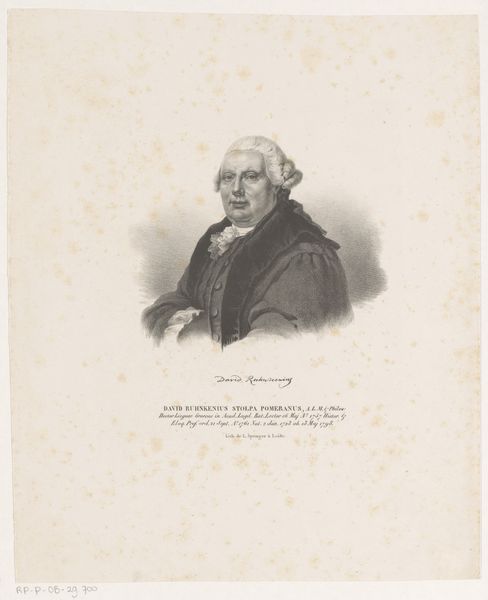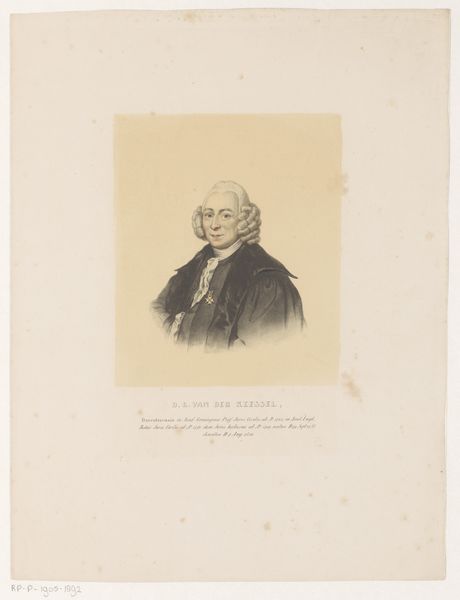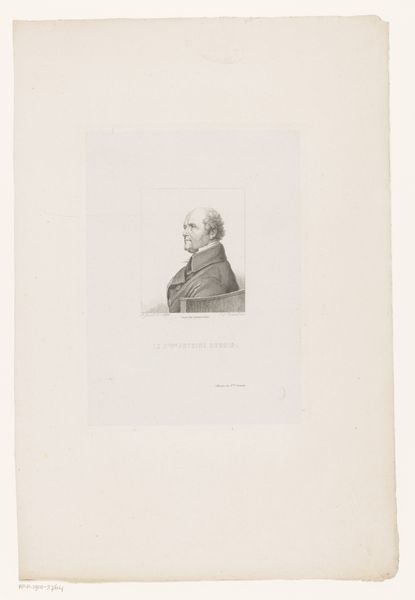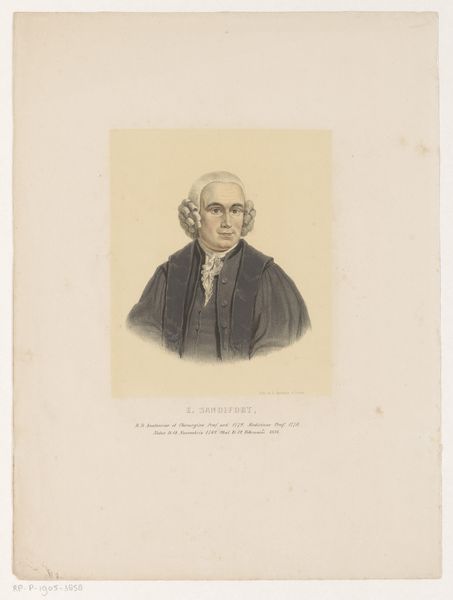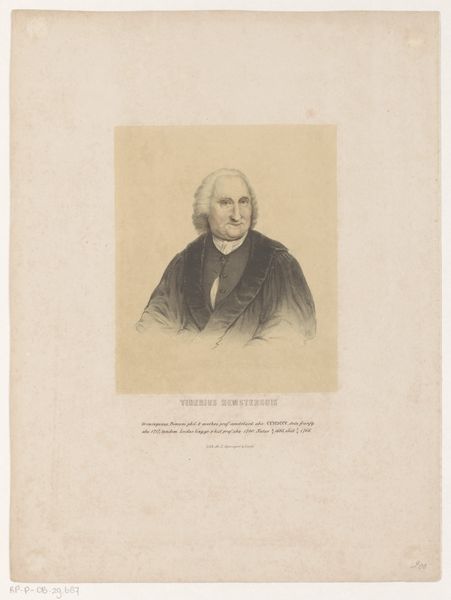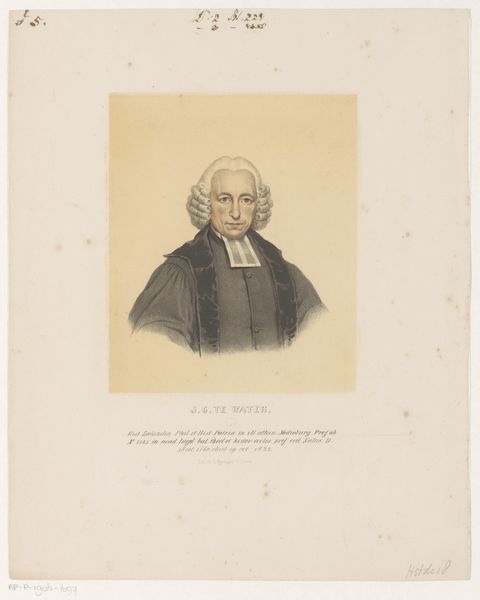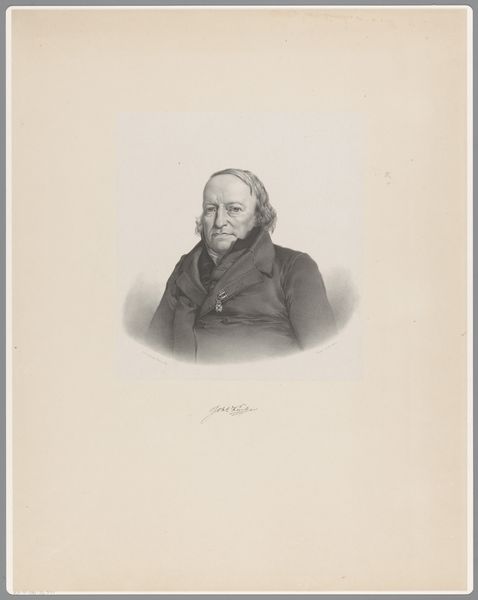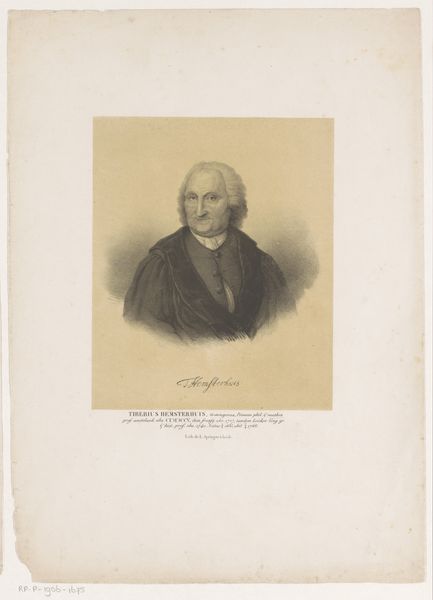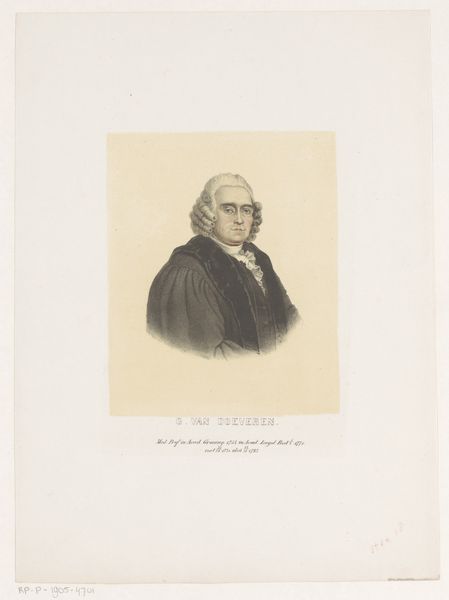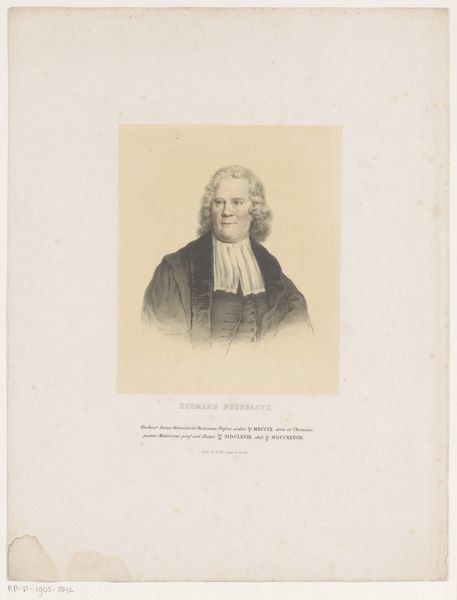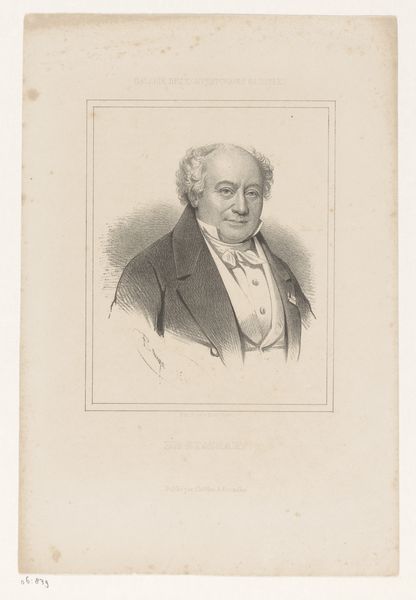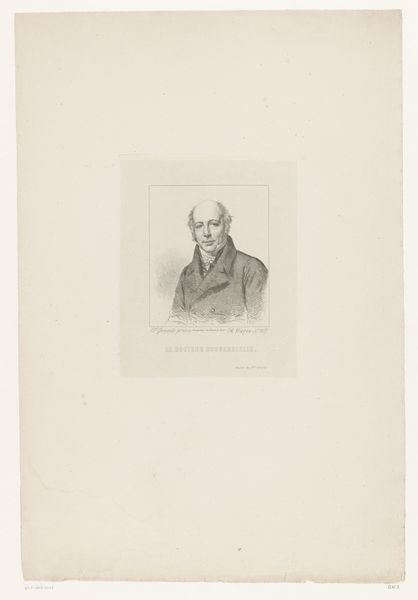
print, engraving
#
portrait
#
pencil drawn
#
16_19th-century
# print
#
old engraving style
#
engraving
#
realism
Dimensions: height 357 mm, width 270 mm
Copyright: Rijks Museum: Open Domain
Editor: We're looking at "Portret van David Ruhnken," an engraving from around 1850 by Leendert (I) Springer. The precision in the engraved lines that capture his features is what stands out to me. How would you interpret this portrait through a formalist lens? Curator: Certainly. The artist's meticulous attention to line and texture compels us to view it with deeper analysis of composition, form and space. Notice the subtle interplay of light and shadow defining Ruhnken's face and attire. How do you read the relationship between the subject and the space? Editor: The composition is strongly focused on Ruhnken himself, isn't it? The surrounding space is largely empty, putting all the emphasis on his presence and features. Is it important? Curator: Exactly. It draws us directly to his physiognomy. Observe the precise lines of the face, how they contrast with the smoother surfaces of his clothing. Do you see how Springer manipulates line weight and density to model volume and texture, creating depth in the figure? Editor: Now that you point it out, I see how the engraver uses the line to suggest shape, volume and direction, using varying tonal scales to enhance texture and form, as well as emphasize detail. That must have been deliberate? Curator: Indeed, the engraving technique here is a significant aspect of the artwork's intrinsic qualities. It shows Springer’s understanding and control over his medium. Through this control he also brings in structure. Is the relationship with other forms in other of Springer's artwork significant in any way? Editor: I see it now! The medium becomes as significant as the subject himself. This close attention to form over historical context or biography offers an entirely new appreciation for portraiture. Thanks! Curator: It's a testament to how much can be gleaned from a purely formal assessment, allowing the artistry of Springer to come alive for us even today.
Comments
No comments
Be the first to comment and join the conversation on the ultimate creative platform.
